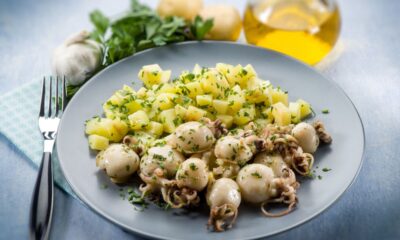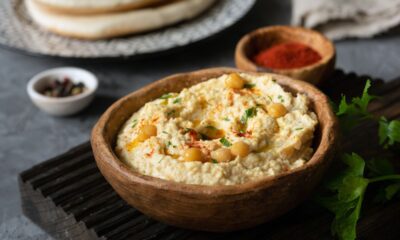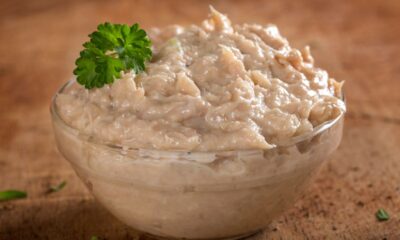Health
Lactose-free diet, what to know

Over the years, both local and world food has evolved both in terms of raw materials and food preparation.
So much so that, by now, all the guides of all the European capitals, including the best apps for visiting Rome if we want to stay in Italy, specify and give particular prominence to structures that offer dishes to those with food problems. New dishes arrive on the table every day, and you always have to be very careful about what you eat. This especially if you are in the presence of intolerances, such as celiac disease (with gluten) or lactose, as regards dairy products.
It is precisely this last parenthesis that is the object of attention, with an ever-increasing number of people affected by this disorder. A deficiency of the enzyme lactase which produces various symptoms at the organic level which in turn affect the individual's mood and living conditions.

Gluten-free and lactose-free diet for weight loss, how to do it best
Having made an overview of the main intolerances that currently exist and which affect the vast majority of individuals in the world, let's now see in more detail the diet suitable for celiac disease and lactose intolerance.
First of all it is necessary to specify that a type of diet of this kind must not be followed by everyone, or even by those who do not have these specific intolerances. It is therefore necessary to ascertain through ad hoc medical tests (gastroscopy and breath test for example) the actual presence of celiac disease or lactose intolerance before following a diet that does not include gluten and dairy products or similar elements. This is because non-intolerant subjects, following a similar diet, could then have counterproductive food shortages.
Given this, for the intolerant, however, it is advisable not to eat foods containing gluten (in case of celiac disease) or lactose (contained above all in dairy products and similar), in order to avoid frequent and marked gastrointestinal problems and disorders. So a diet that is therapeutic rather than mere aesthetics or dedicated to weight loss.
What to eat on a lactose-free diet?
Going into the folds of the lactose-free diet, as anticipated in the initial phase, it provides for the elimination or sporadic intake of dairy products and similar. In fact, they contain the highest level of this disturbing element which is not adequately digested by the body of the intolerant because it lacks the enzyme lactase.
There are naturally lactose-free dairy products, such as Emmenthal or Pamigo, to name two, that are suitable for the cause. In reality, the list is wider and is also available online, just do a simple search for lactose-free foods. This is to say that even the intolerant can indulge in the whim of savoring cheese, or yoghurt, or milk-like drinks without having to deprive themselves of them completely. There are variants of vegetable milk (almond, rice, oats, soy, etc.) or even kefir, in the form of yogurt and a milk-like drink.
What to eat for breakfast without lactose?
Wanting to focus more on lactose-free breakfast, there are many foods and possible combinations of the latter to create a perfect and complete first meal of the day. Starting with a good yogurt kefir with oat flakes and almonds accompanied by a fruit of your choice from kiwis, apricots, peaches, bananas, etc. Or again you could opt for a savory version, American-style, with eggs and bacon, or pancakes with a glass of vegetable drink (rice milk, almonds, etc.) and a refreshing squeeze of orange or grapefruit. In short, the alternatives are certainly not lacking, you just need to know how to choose!
Which food contains the most lactose?
It often happens, for those who are lactose intolerant, wondering which foods or foods to avoid in absolute terms. In short, the one that contains a higher percentage of lactose and therefore harmful for the intolerant.
The answer is simple: fresh dairy products, such as cow's milk, or cream, or even soft cheeses. On the contrary, however, even if it does not apply as a general rule, the higher the seasoning, the lower the presence of lactose. The case in question could be that of 32-month Parmigiano, a top option for the intolerant.
Weekly lactose-free diet, an example
Wanting to give an example of a weekly lactose-free diet, you can choose a breakfast like the one anticipated above: with white kefir yogurt, almonds and oatmeal to alternate with vegetable drinks for the equivalent of a glass, accompanied by rusks with honey or fruit jams. Or still prefer the savory version, with eggs and bacon (although the non-fried variant, therefore soda, would be preferable).
In snacks, dried and fresh fruit can be alternated with a protein quota next to it if you opt for fresh fruit. For lunch, then, the traditional pasta dish, wholemeal or normal, with seasonal vegetables, extra virgin olive oil, and proteins derived from fish or meat (avoid cold cuts and cheeses of course). At dinner, on the other hand, a second course is always preferable, as a matter of greater satiety which avoids early post-prandial hunger.
So red or white meat (to be fresh to avoid the presence of additives containing traces of lactose), fish (salmon, swordfish, etc.), vegan variants (such as tofu, seitan and so on) or a nice salad with legumes ( chickpeas or beans) to cover the protein quota and the inevitable extra virgin olive oil
What is the 1000 calorie lactose free diet?
After having reviewed foods suitable for lactose intolerant and examined a possible weekly diet, let's finally examine the 1000 calorie lactose-free diet. This diet is obviously not suitable for everyone but must always be outlined on the basis of the subjective daily requirement.
In principle, it is a diet mainly based on lactose-free foods, vegetables and satiating and draining drinks (herbal teas, green tea, etc.). A diet that is certainly not suitable for those with an active lifestyle, such as those who play sports or work that require a high energy expenditure. The income would be insufficient to carry out any task such as the one mentioned.
As mentioned, therefore, lots of vegetables (in season, often velvety), water (or alternatives such as herbal teas and tea), non-fatty proteins (white meats, legumes and fish) and a very low intake of carbohydrates. All to fit within 1000 calories.
Riproduzione riservata © - WT











